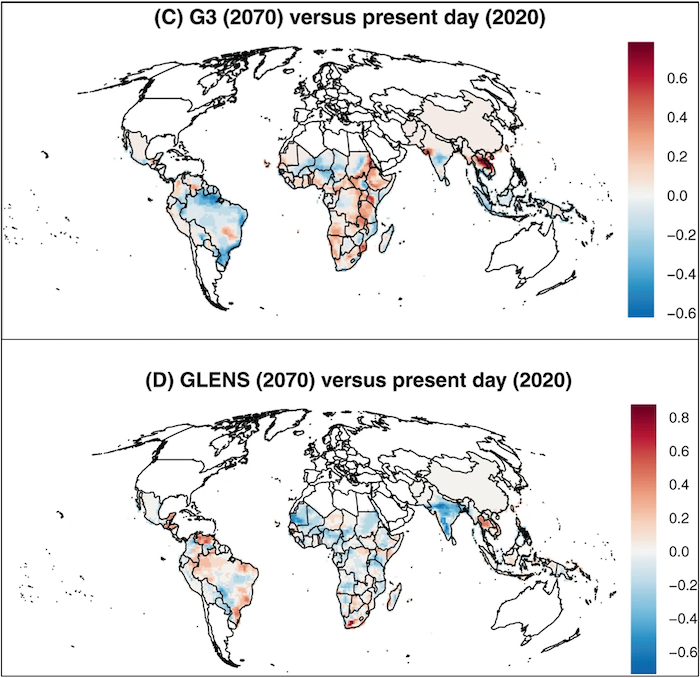
RYAN – Solar geoengineering could redistribute malaria risk in developing countries
Colin J. Carlson, Rita Colwell, Mohammad Sharif Hossain, Mohammed Mofizur Rahman, Alan Robock, Sadie J. Ryan, Mohammad Shafiul Alam, & Christopher H. Trisos
Article first published online: 20 April 2022
DOI: https://doi.org/10.1038/s41467-022-29613-w
ABSTRACT: Solar geoengineering is often framed as a stopgap measure to decrease the magnitude, impacts, and injustice of climate change. However, the benefits or costs of geoengineering for human health are largely unknown. We project how geoengineering could impact malaria risk by comparing current transmission suitability and populations-at-risk under moderate and high greenhouse gas emissions scenarios (Representative Concentration Pathways 4.5 and 8.5) with and without geoengineering. We show that if geoengineering deployment cools the tropics, it could help protect high elevation populations in eastern Africa from malaria encroachment, but could increase transmission in lowland sub-Saharan Africa and southern Asia. Compared to extreme warming, we find that by 2070, geoengineering would nullify a projected reduction of nearly one billion people at risk of malaria. Our results indicate that geoengineering strategies designed to offset warming are not guaranteed to unilaterally improve health outcomes, and could produce regional trade-offs among Global South countries that are often excluded from geoengineering conversations.
Read the full publication at Nature Communications.